
| Crossing the Julian Alps (Kranjska Gora to Trenta) |
Day 1 - Kranjska Gora to Dom v Tamarju (13 km - 530m ascent - 230m descent) |
 |
|
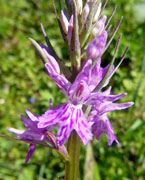 |
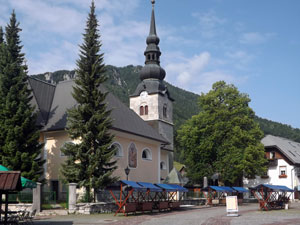 The church in Kranjska Gora |
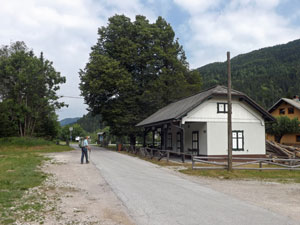 Disused railway station in Podkoren |
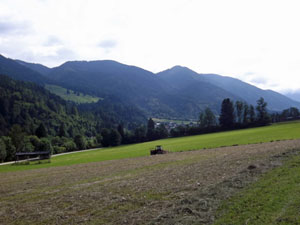 View over the fields to the Karavanke Range |
|
||
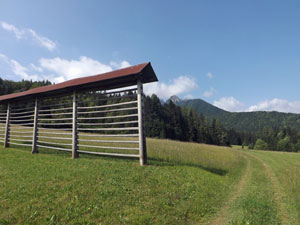 Hay rack on a ski run |
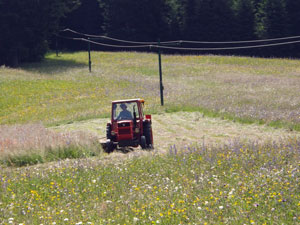 Slovenian farmer making hay while the sun shines |
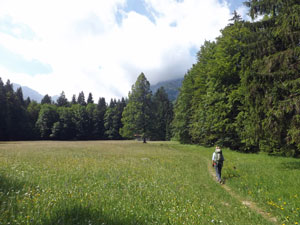 Crossing a meadow in the Planica Valley |
|
|
|
|
|
|
|
|
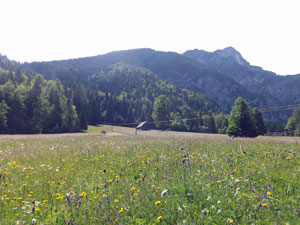 Flower-speckled meadow below 1745m Cprinik |
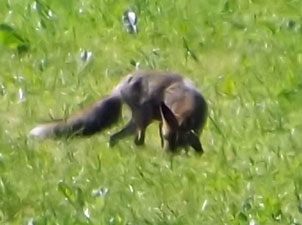 |
|
|
||
|
Leaving the ski-jumps behind, we crossed a dry creek, its stony bed the colour of old bones and backed by the sheer walls of the valley. From here we veered right to follow a broad, loose-stoney path through the beautiful forest of the Planica Valley, in parts under the luminous-green of beech canopy, in parts under the darker greens of spruce and pine. The valley was slowly being wedged by the sheer rock walls of Slemenova Špica to the east and Ponca to the west. Occasionally, a gap ahead would reveal the cloud-covered head of the valley and the sheer rock walls of the peaks backing it.
|
|
|
||
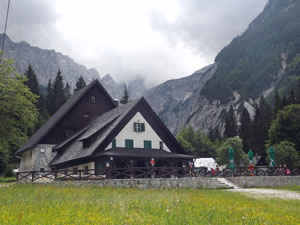 Close up of Dom v Tamarju |
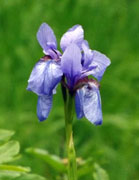 |
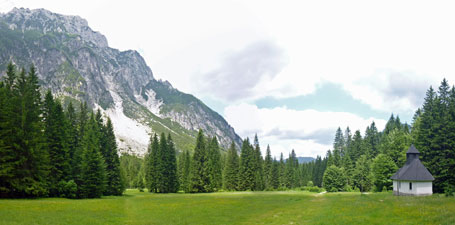 Looking past the chapel and down the Tamar Valley from the mountain hut |
|
||
|
|
|
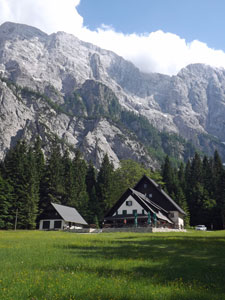 Dom Tamar and the silvery walls of Mojstrovska |
|
|
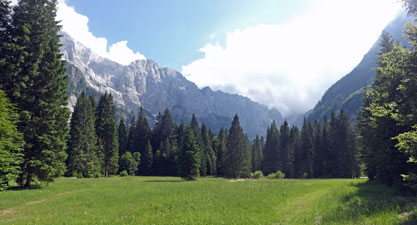 The beauty of the Tamar Valley |
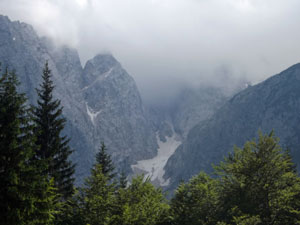 View towards cloud-covered Jalovec |
|
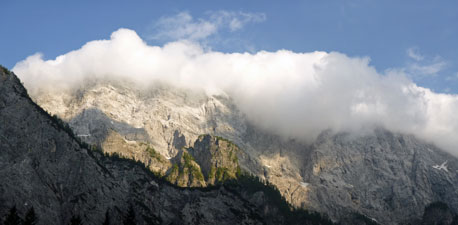 Cloud clinging to the rocky tops of Mojstrovska |
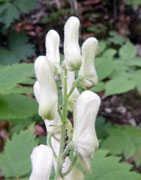 |
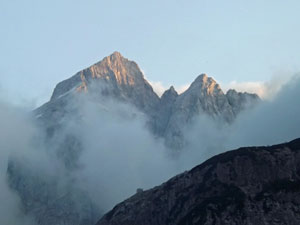 At last, the 2645m peak of Jalovec emerges from the cloud |
|
Then it was time for dinner and bed - we would need to start early tomorrow for the big climb up to Sleme. Just before retiring, I went out to take one last look up at the mountains - the sharply defined rocky crest of Jalovec was beginning to appear as the clouds slowly dispersed. Tomorrow promised to be a good day. |
||
        |
Day 2 - Tamarju to Postarski Dom (10 km - 1010m ascent - 420m descent) |
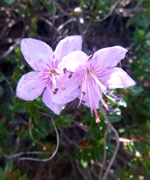 |
|
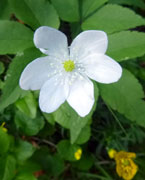 |
 Early morning on the crystal-like peak of Jalovec |
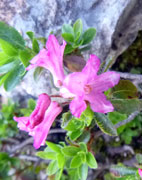 |
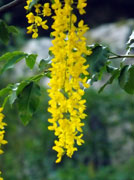 |
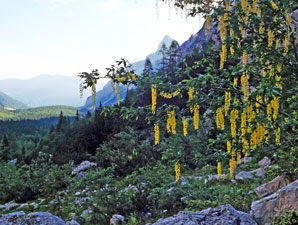 Alpine laburnum lighting up the shade |
|
||
|
|
|
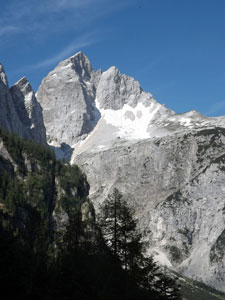 A glance back towards the pyramid of Jalovec |
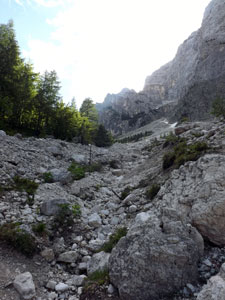 Rocky gully heading up to Slatnica Pass |
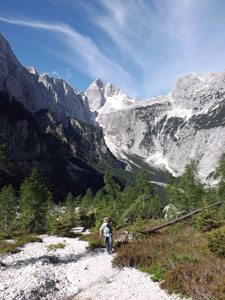 Climbing the gully below Mojstrovska ... |
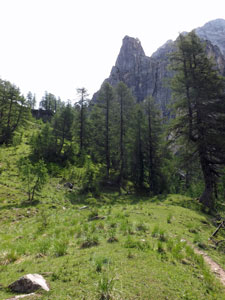 ... and the route ahead to the pass |
Passing a bell-tinkling flock of sheep, we left the ascent gully to begin climbing up the grassy slopes of Slemenova Špica - a steep zig-zagging path up through the larch trees that finally brought us out at Slatnica Pass. From here, the eastern horizon opened up with views across the sheer face of Mojstrovska to Špik, Škrlatica and the northern Julians peaks - a superb panorama in the warm morning sunshine. |
|||
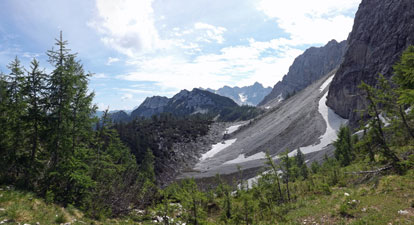 At last, the view eastwards from Slatnica Pass |
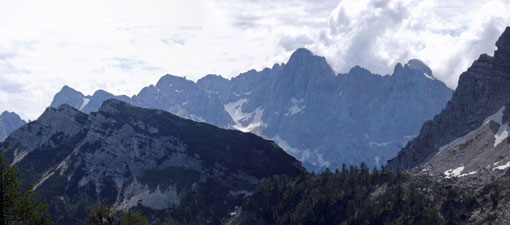 Looking across the Vratca Pass towards the massif of Škrlatica (2740m) |
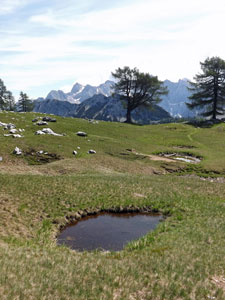 The pools of Sleme |
|
|
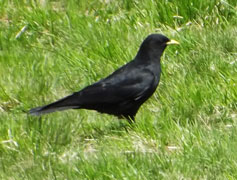 |
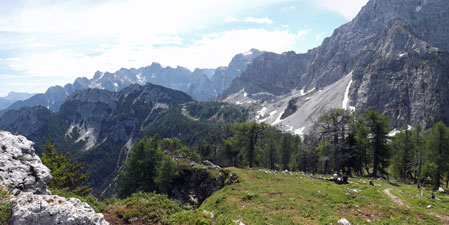 Looking at the route ahead - from Sleme meadows to Vratca Pass |
|
|
|
|
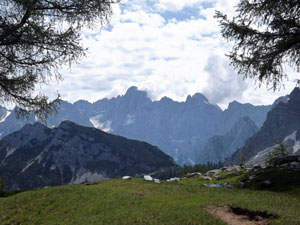 View from Sleme towards Škrlatica |
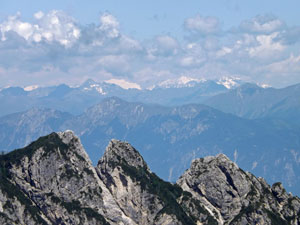 The distant mountains of Austria - from Slemenova Špica |
|
|
||
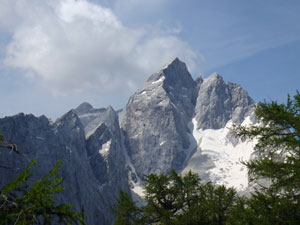 A last look at Jalovec |
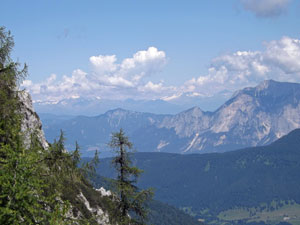 The cliffs of Slemenova Špica and the Karavanke Range |
|
|
|
|
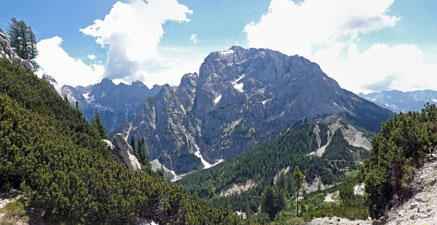 View of 2547m Prisank from Vratca Pass |
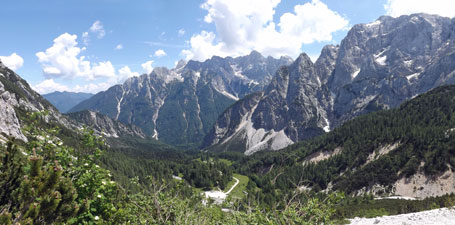 Looking down the north side of the Vršič Pass (with Škrlatica and Prisank behind) |
|
|
|
|
|
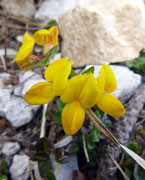 |
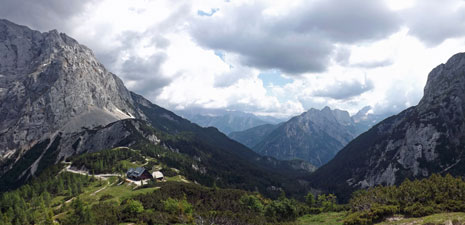 The setting of Postarski Dom mountain hut on the flank of the Vršič Pass |
|
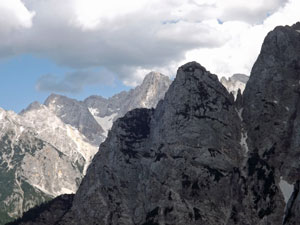 |
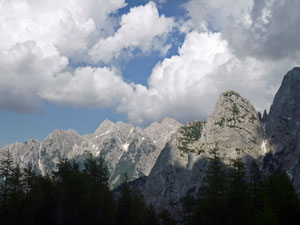 Three aspects of the Julian Alps |
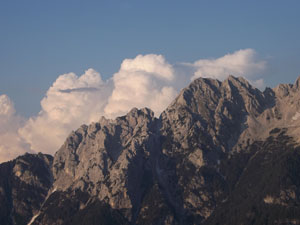 |
|
||
          |
Day 3 - Postarski Dom to Trenta (17 km - 320m ascent - 1380m descent) |
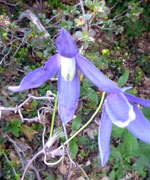 |
|
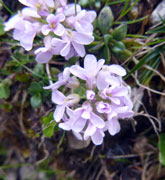 |
|
|
|
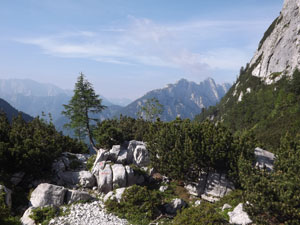 Leaving Vršič Pass |
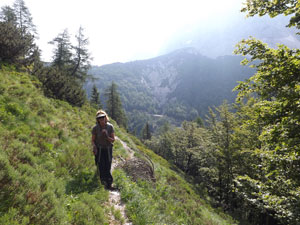 On the traverse below Velika Mojstrovska |
|
|
|
|
|
|
|
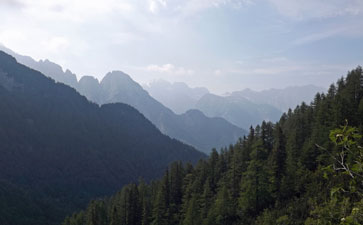 The ridges of the Julian Alps disappear into the haze |
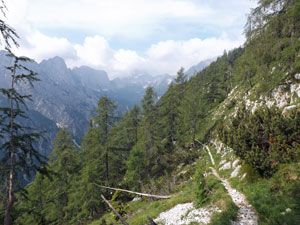 Crossing the slopes below Travnik |
|
|
|
|
|
|
|
|
|
|
||
|
As the thunder pealed, we were glad to be down in the valley and, as the big drops of rain began to fall, we were glad that the hut was just around the corner. We didn't quite get in dry, but we avoided a soaking and took the occasion to enjoy a bowl of hot soup as the rain fell outside.
|
|
|
||
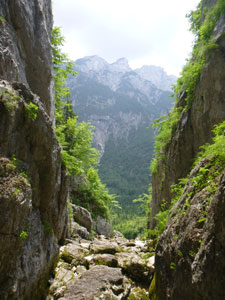 Looking out the gap of Izvir Soče (source of the river) |
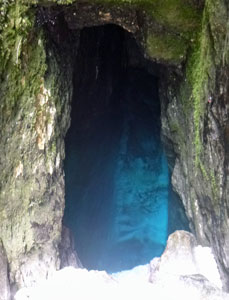 The clear blue pool of the Soča source |
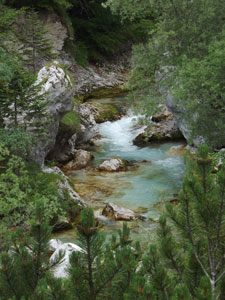 The Soča River below its source |
|
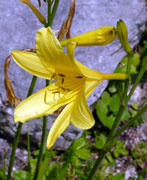 |
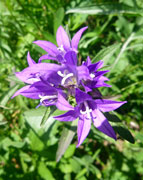 |
|
|
|
||
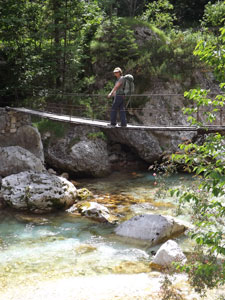 Suspension bridge across the Soča Suspension bridge across the Soča |
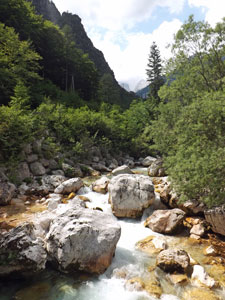 Limestone boulders in the Soča |
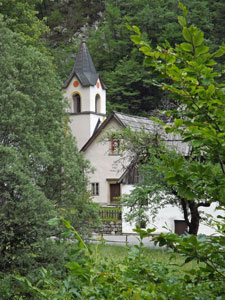 The church of Sveta Marija |
|
|
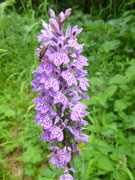 |
|
|
    |